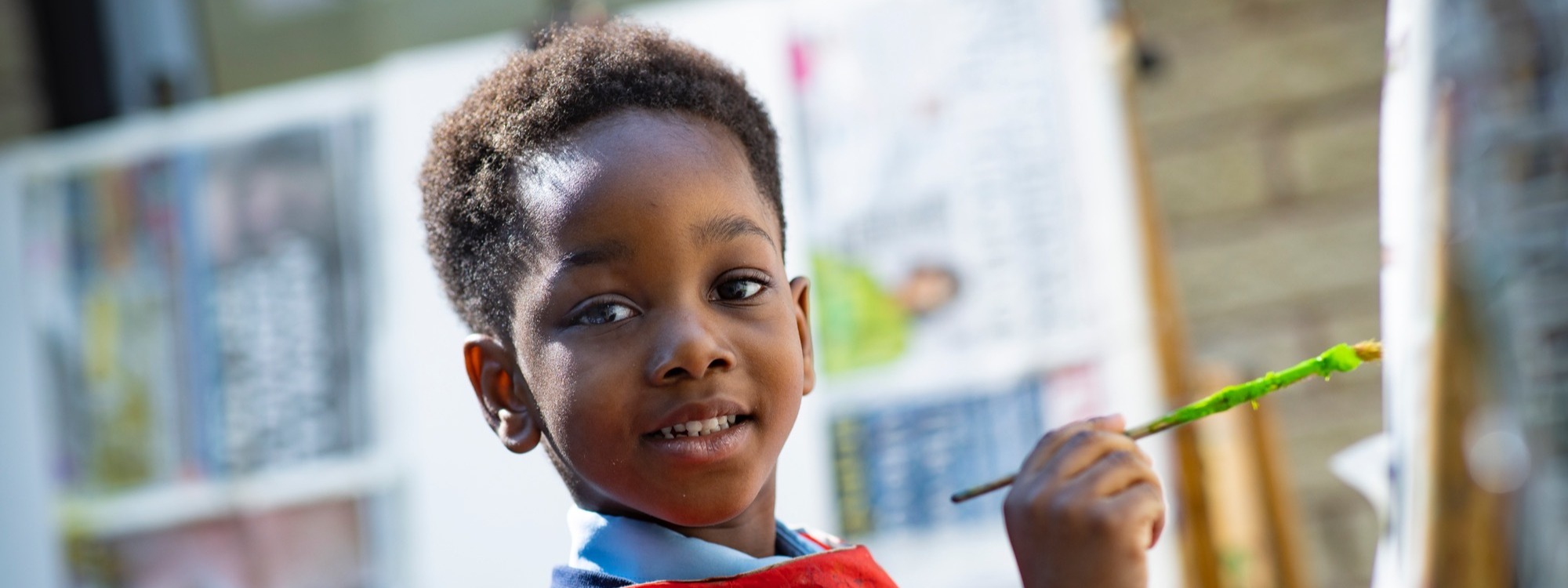
- Home
- Curriculum
- Subject Information
- Art
Art

Intent:
Art gives children the skills to communicate their thoughts, ideas and observations in a visual or tactile form through a variety of tools, techniques, media and experiences. Children can develop their language, ideas and feelings when they talk about, and evaluate, their own and other people’s work.
Aims
Our art lessons inspire and challenge students, offering opportunities for children to:
- become visually literate and able to identify the key elements of art, including emotions
- explore their ideas and record their experiences
- become proficient in drawing, painting, sculpture and other art, craft and design techniques and show progression of skills over time
- evaluate and analyse creative works using the language of art, craft and design
- learn about diverse artists, craft makers and designers, understand the historical and cultural development of their art forms, and appreciate the values they reveal.
Implementation
Foundation Stage and Key Stage 1
Throughout the Early Years and Key Stage 1, we develop children’s creativity and imagination through providing art, craft and design activities that relate to children’s own identity and experiences, the natural and made objects and materials with which they are familiar and the locality in which they live. Children:
· Use a range of materials creatively to design and make products
· Use drawing, painting and sculpture to develop their ideas, experiences and imagination
· Develop art and design techniques in using colour, pattern, texture, line, shape, form and space
· Learn about the work of a range of artists, craft makers and designers, describing similarities and differences and making links to their own work.
Key Stage 2
During Key Stage 2, we build on children’s knowledge, skills and understanding of materials and processes by providing more complex activities and helping them to understand the roles of art and design in the wider world. Children:
- record their observations and use them to review and revisit ideas
- improve their mastery of art and design techniques, including drawing, painting and sculpture with a wide range of materials (for example pencil, charcoal, paint and clay)
- learn about a range of artists, architects and designers in history.
All children in key stage two are required to use a sketchbook:
- to record visual and other information and refer to it as they develop ideas;
- to work out ideas, plans and designs;
- to look back at and reflect on their work, reviewing and identifying their progress.
What a typical lesson looks like:
Flashback: a chance for pupils to retrieve and build upon earlier skills or knowledge
Teach it: introduce a new skill with live modelling or a new artist/ art style
Practise it: discussion of and guided practice of a skill/ style/ technique
Prove it: use of relevant media (paper, clay, paint etc) to record ideas, evaluate an artist’s style, practise skills or experiment with techniques.
Dig deeper: further develop skills and interpretation of work, including “gallery time” where children can appreciate the work of their peers
Art is also used within other areas of the curriculum to enable pupils to represent their thoughts and ideas visually. It can be used as a stimulus for literacy, to portray complex emotions in RE or to deepen understanding in maths
Impact:
By taking part in our regular discussions and decision making processes, children will not only know facts and key information about art, but they will be able to talk confidently about their own learning journey and have a growing understanding of how to improve.
Assessment
Formative assessment includes in-lesson discussions with children about their work, enabling them to evaluate their own progress and skills, and find ways to improve their work.
Progression is shown through the different expectations in each year group (See “Art Skills Progression”). When assessing work we consider both the process undertaken and the end product.
Assessment relating to the learning objectives for each art activity includes the following:
· a common l drawing task during each school year e.g. a plant, person or object
· year group portfolios containing examples of work demonstrating coverage at EXS/GDS
Individual Bromcom art assessment is to be completed three times per year
Monitoring, evaluation and review
Staff work collaboratively twice per year to moderate an area of art, so that there is an objective understanding of levels. The Art Lead can use Power BI to analyse standards in each year group, as identified by the class teachers.
Pupils at St Marie's have the opportunity to show off their talents throughout the year. Art is celebrated and included across the curriculum, where applicable. It is made accessible and enjoyable for all pupils and it gives all pupils a chance to shine. We have opportunities for cross-curricular art homework (topic) plus an annual Jolly Junk competition. An extra-curricular Art club is run for pupils in Key Stage 1. Both sites produce a Christmas gallery, which parents are invited to view. In addition, Stretch-Your-Imagination Day is an opportunity for children to design/ wear outlandish costumes or outfits while raising funds for charity.
